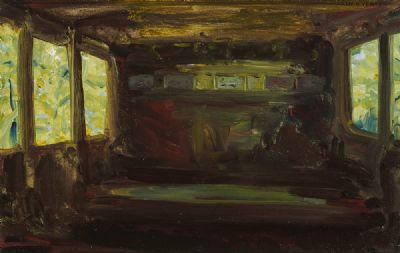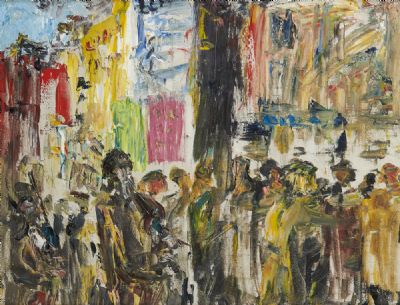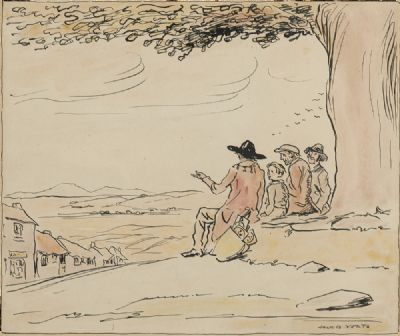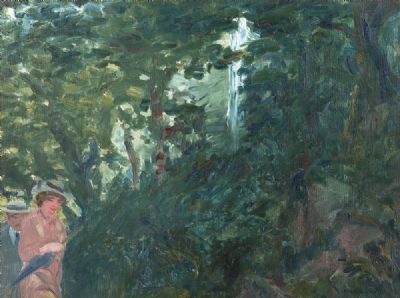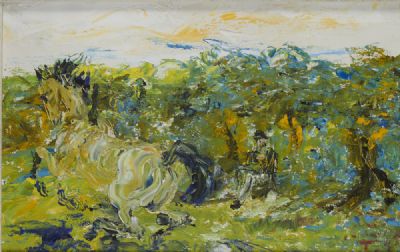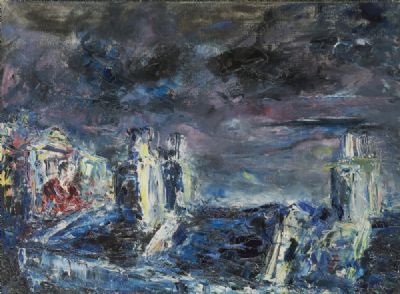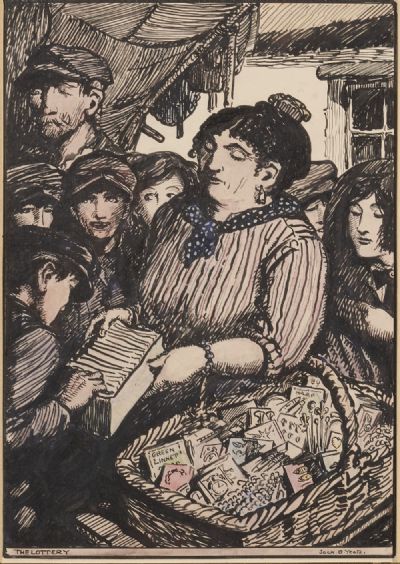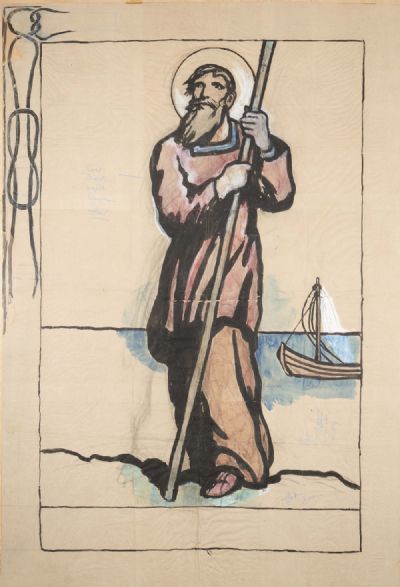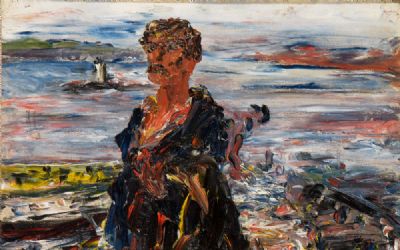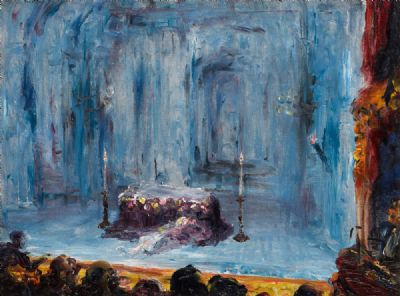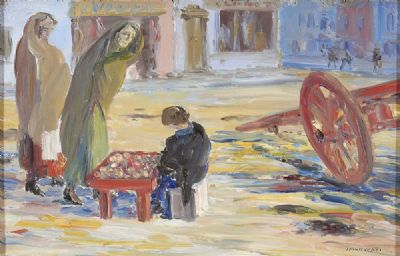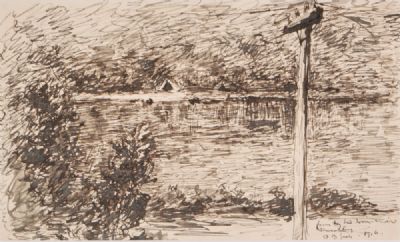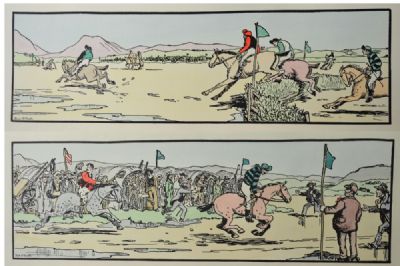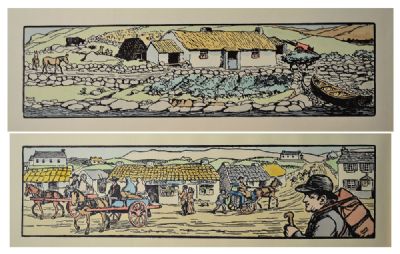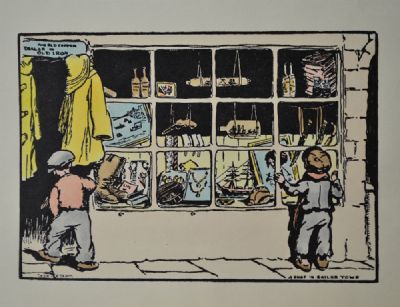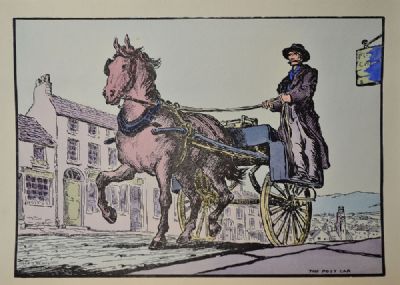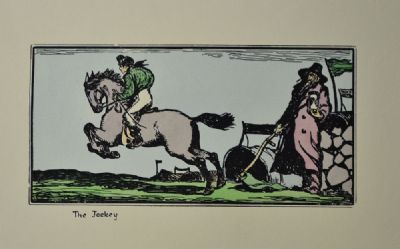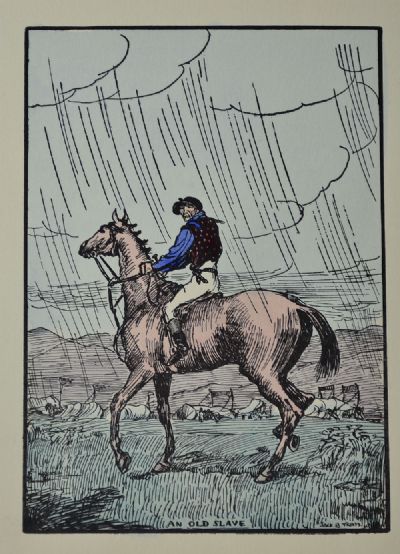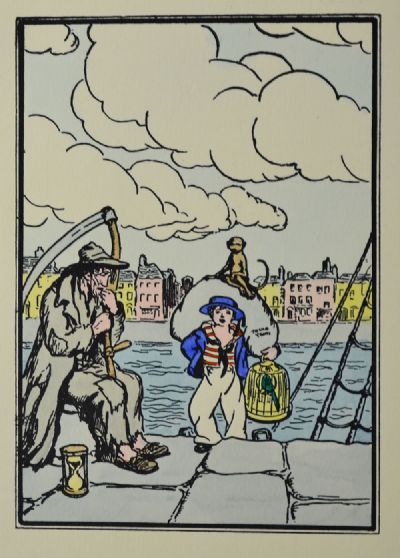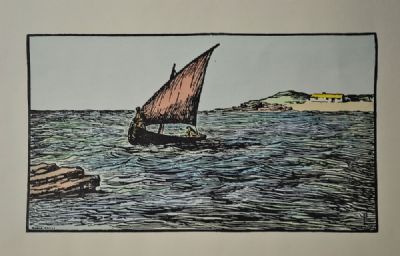Jack Butler Yeats
Jack B Yeats was born in London but spent most of his youth with his grandparents in Sligo, a place that would remain a long lasting influence on his art. He studied in London and began illustrating for various publications before dedicating his time completely to painting. In 1910 he moved to Ireland and his first works from this time were descriptive and representational. He spent most of his time in the West walking and observing and would later paint from memory the people and landscape he had witnessed to which the character was always of primary importance and the landscape secondary. He says of this “I never make up my pictures. All my people are real people I have actually seen."
His work has a clear trajectory and evolution. He moves away from realism in 1920s and ultimately his work culminates in a highly expressionist style in which colour carries emotional charge, figures are abstracted and though of primary importance, depicted along with the setting and landscape through the same heavy impasto and rush of colour. Deeply emotional, Yeats is concerned with the humanity of his subjects who are painted with affection. The integral formal composition of his pictures are emotionally contrived through stylisation and balance of colour, and the viewer is compelled to bridge the gap between representation and the paintings physical properties.
Among his achievements, he won a silver medal in Arts and Culture segment of the Olympics in Paris, he was appointed governor of National Gallery of Ireland and was awarded an honorary degree at Trinity College. He was an elected member of the Royal Hibernian Academy. He exhibited at the inaugural Irish Exhibition of Living Art in 1943 and most importantly, he is widely considered the most significant Irish artist of the twentieth century. Read More
His work has a clear trajectory and evolution. He moves away from realism in 1920s and ultimately his work culminates in a highly expressionist style in which colour carries emotional charge, figures are abstracted and though of primary importance, depicted along with the setting and landscape through the same heavy impasto and rush of colour. Deeply emotional, Yeats is concerned with the humanity of his subjects who are painted with affection. The integral formal composition of his pictures are emotionally contrived through stylisation and balance of colour, and the viewer is compelled to bridge the gap between representation and the paintings physical properties.
Among his achievements, he won a silver medal in Arts and Culture segment of the Olympics in Paris, he was appointed governor of National Gallery of Ireland and was awarded an honorary degree at Trinity College. He was an elected member of the Royal Hibernian Academy. He exhibited at the inaugural Irish Exhibition of Living Art in 1943 and most importantly, he is widely considered the most significant Irish artist of the twentieth century. Read More

